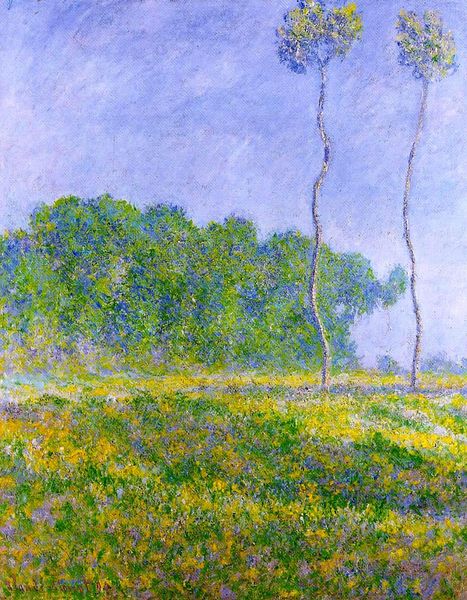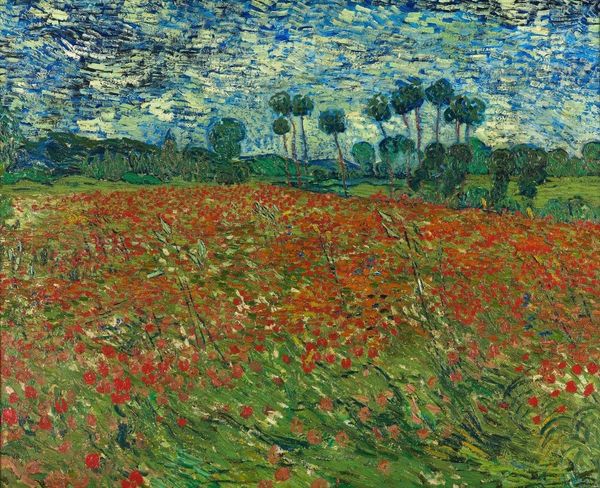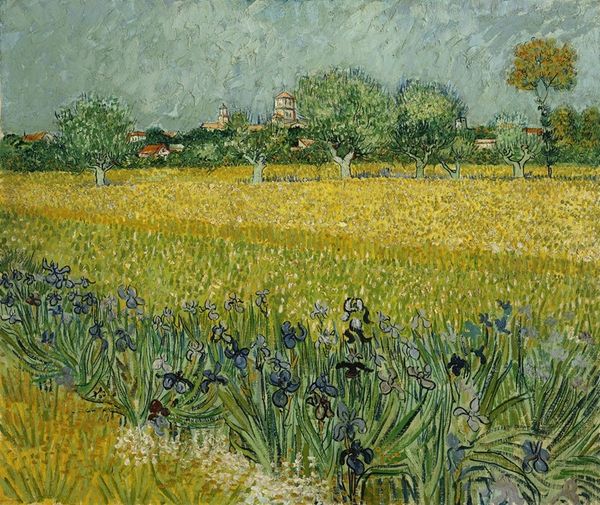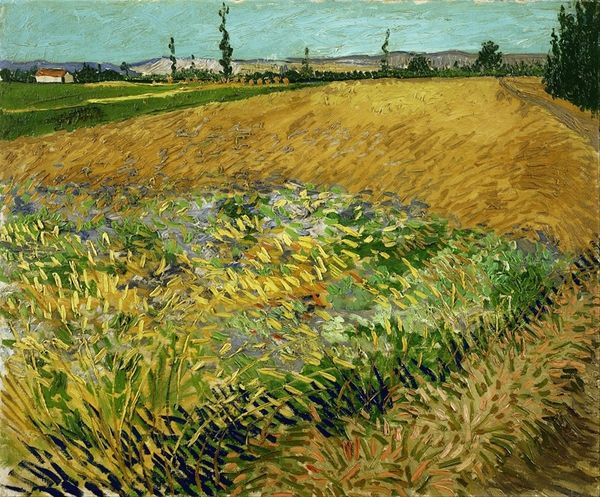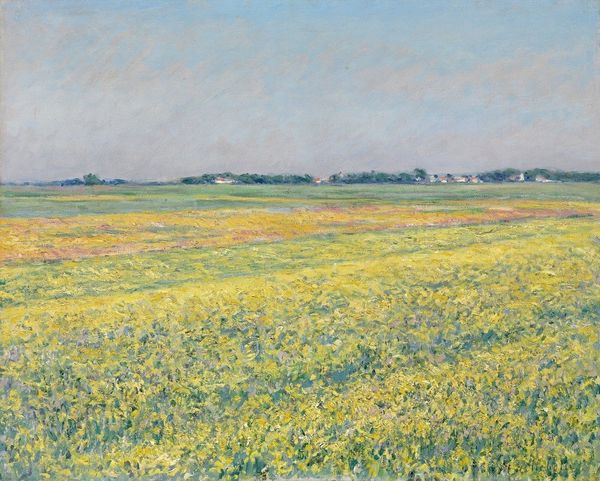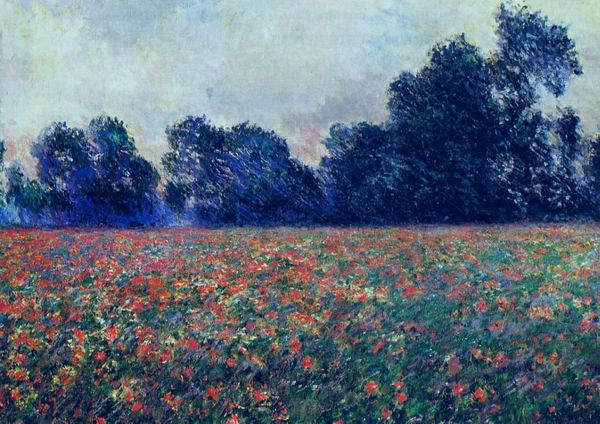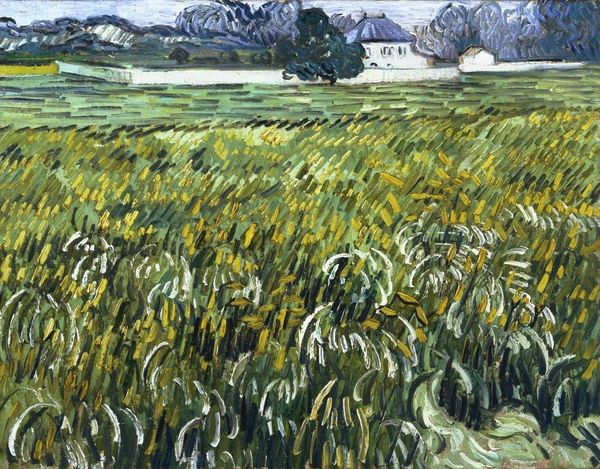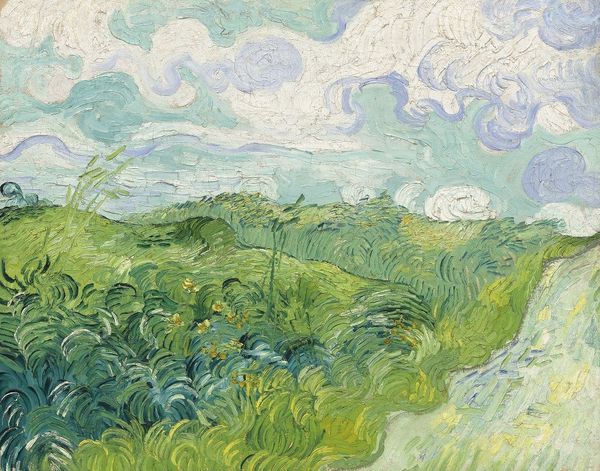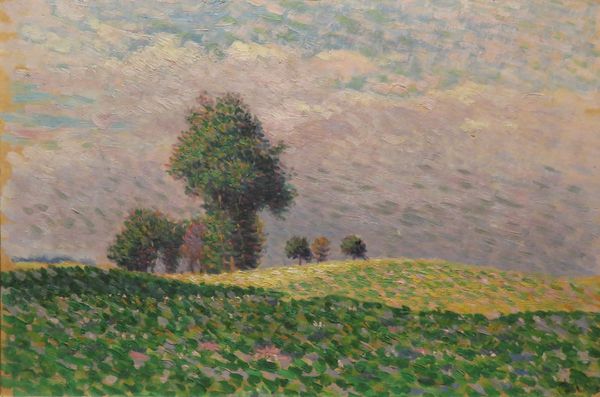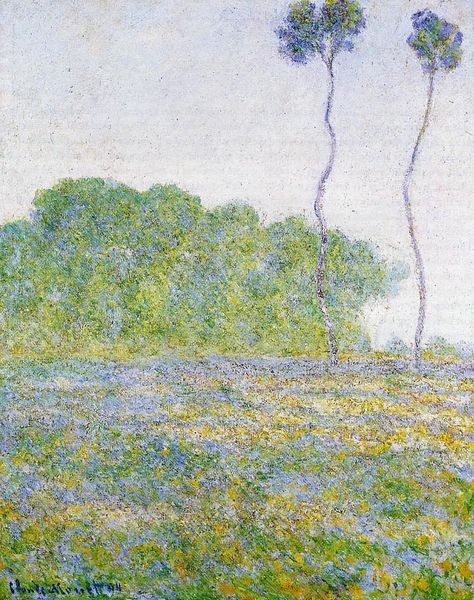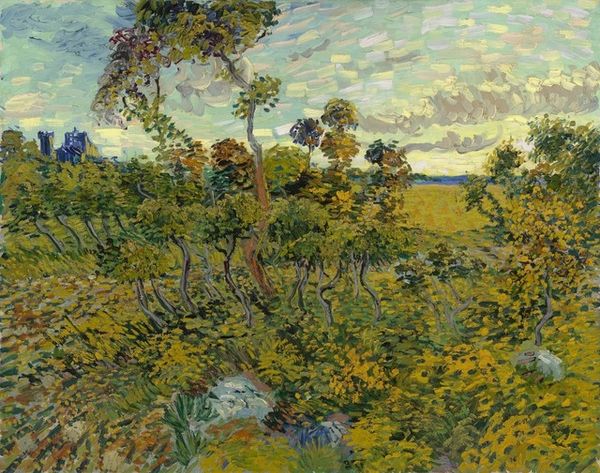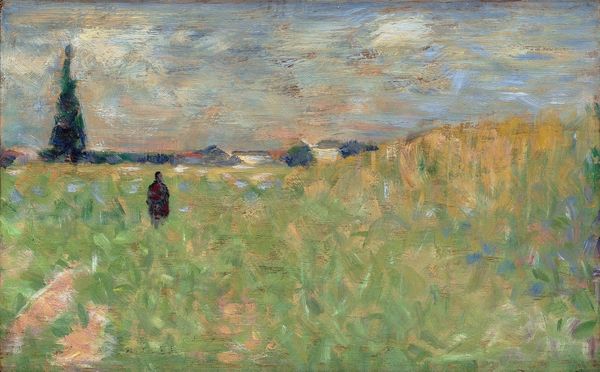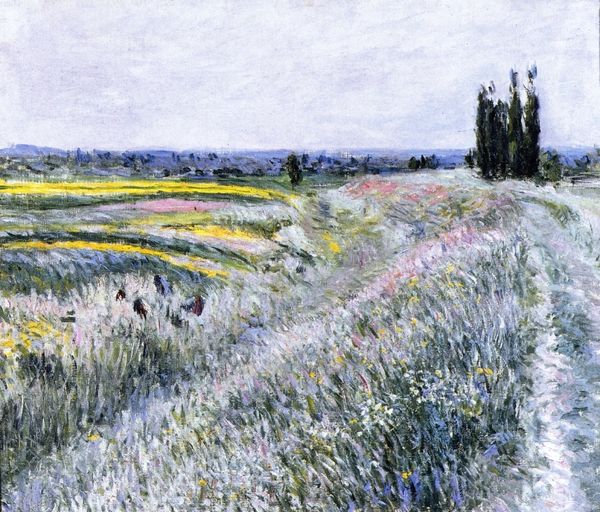
painting, plein-air, oil-paint
#
painting
#
impressionism
#
plein-air
#
oil-paint
#
landscape
#
impressionist landscape
#
post-impressionism
Copyright: Public domain
Editor: Here we have Claude Monet's "Field of Yellow Irises at Giverny" from 1887, an oil painting that just feels... expansive. I'm really drawn to how the blurred shapes almost vibrate. What do you see in this piece? Curator: I see a strategic engagement with land, labor, and leisure, especially when considered through the lens of 19th-century French society. Monet wasn't simply capturing a pretty scene; he was shaping one. This "natural" landscape is deliberately cultivated. Do you see how the vibrant field is juxtaposed against the subdued horizon? It speaks volumes about ownership and controlled beauty. Editor: Yes, there's definitely a contrast. The field feels almost untamed compared to the backdrop. How does this idea of cultivated nature relate to social issues? Curator: Well, think about who had access to these spaces. Impressionism often depicted bourgeois leisure, a privilege born from specific socio-economic conditions. Monet, through his idyllic scenes, can inadvertently highlight the exclusion of working-class individuals from these curated spaces of beauty and leisure. It begs the question, who gets to experience and benefit from this "natural" world? And who's labor sustains it? Editor: That's a perspective I hadn't considered! So, even within something so beautiful, there are embedded power dynamics at play? Curator: Precisely. It encourages us to challenge the romanticized view of nature. How might a farm worker or landless peasant view this same scene, knowing their access and contributions differ greatly? Art prompts us to explore these contrasting narratives. Editor: I'll definitely look at Impressionism differently now. It's fascinating how one painting can reveal such complex social commentary! Curator: Absolutely, that's the power of engaging art with critical and historical lenses. It fosters conversations that help us understand the world, and its power dynamics.
Comments
No comments
Be the first to comment and join the conversation on the ultimate creative platform.
